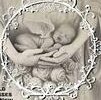When you lose a loved one, there are many details that need to be taken care of. One of the most important is the choice of clothing they will be dressed in for their viewing and burial. Dressing a deceased person in clothes that matched their style and preferences in life can offer comfort to mourners and capture a unique image of the loved one in death.
The most common choice of clothing is a white casket gown. However, some people choose to dress their loved ones in other clothing, such as a wedding gown. There is no hard and fast rule when it comes to choosing clothing for a loved one who has passed away, but as a general rule of thumb it is best to pick something that would be comfortable for them in life. This will allow mourners to see their loved one as they remember them and feel a sense of closure when they say goodbye.
When selecting clothing for a loved one in death, it is also important to consider their religion and method of disposition. Some religions have rules regarding dressing the deceased in specific styles and colors. It is best to check with the church or religious leaders about these rules before making any decisions.
In addition to the outer gown layer and inner lining made of absorbing cotton, some families like to add other accessories or embellishments to their loved one’s outfit. These items may include jewelry, a favorite piece of clothing or a cherished accessory. While it is best to keep the attire simple, adding a special touch can be a comfort to mourners and provide them with a final image of their loved one that they will always have.
A Utah seamstress is helping ease the pain of infant deaths by sewing burial garments sourced from donated dresses.
The loss of an infant is unimaginable for parents. It is estimated that for every thousand live births in the United States, five infants die, and this doesn’t even count stillbirths or miscarriages. This can be especially devastating for families who live in communities with high rates of infant mortality. KUER’s Ciara Hulet profiled a seamstress in Utah who is trying to ease the pain of these families by sewing burial gowns for infants that are sourced from donated wedding dresses. Her efforts are gaining traction in the state.
